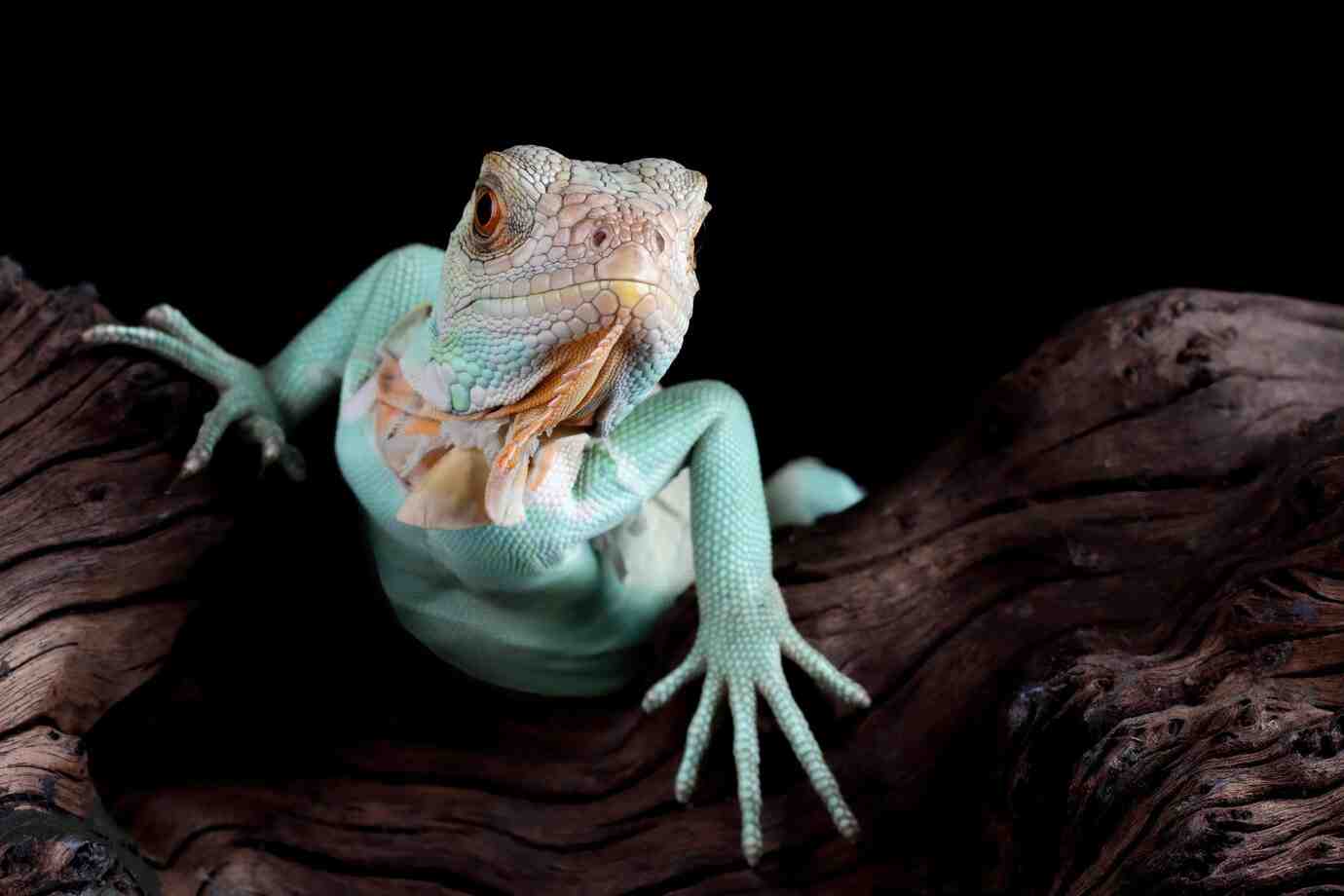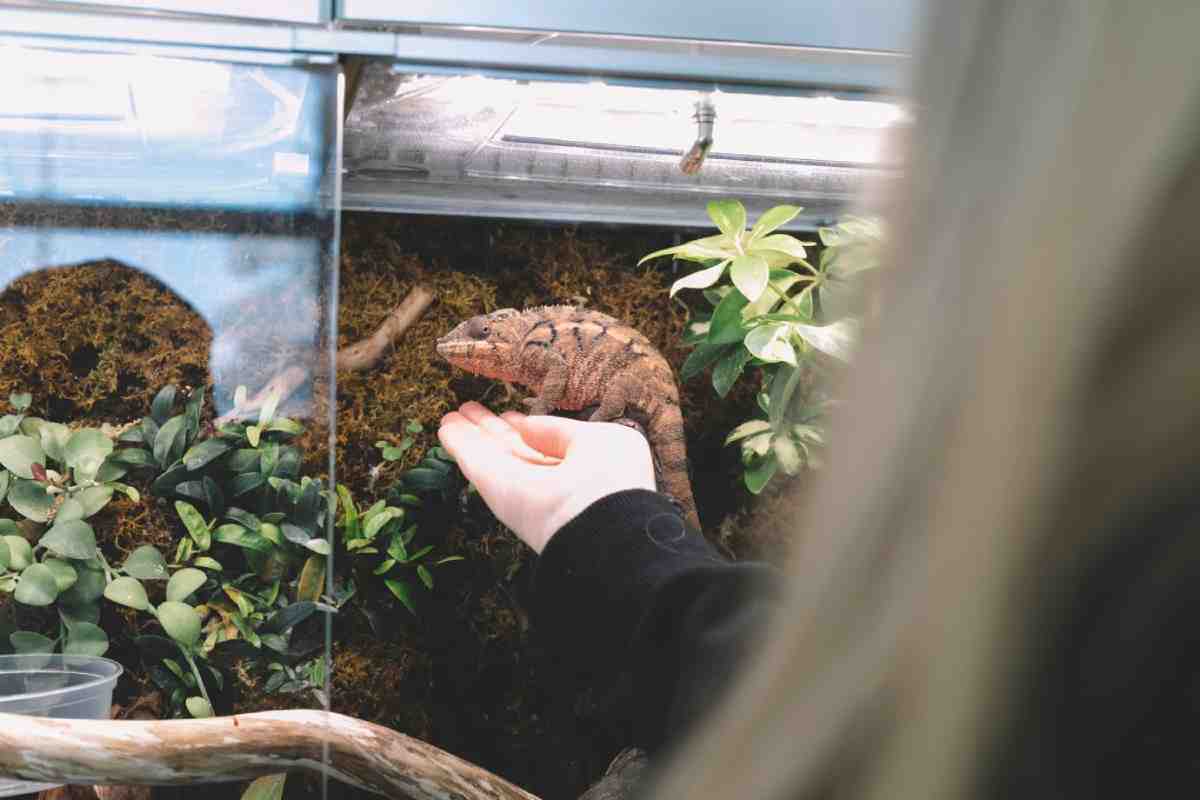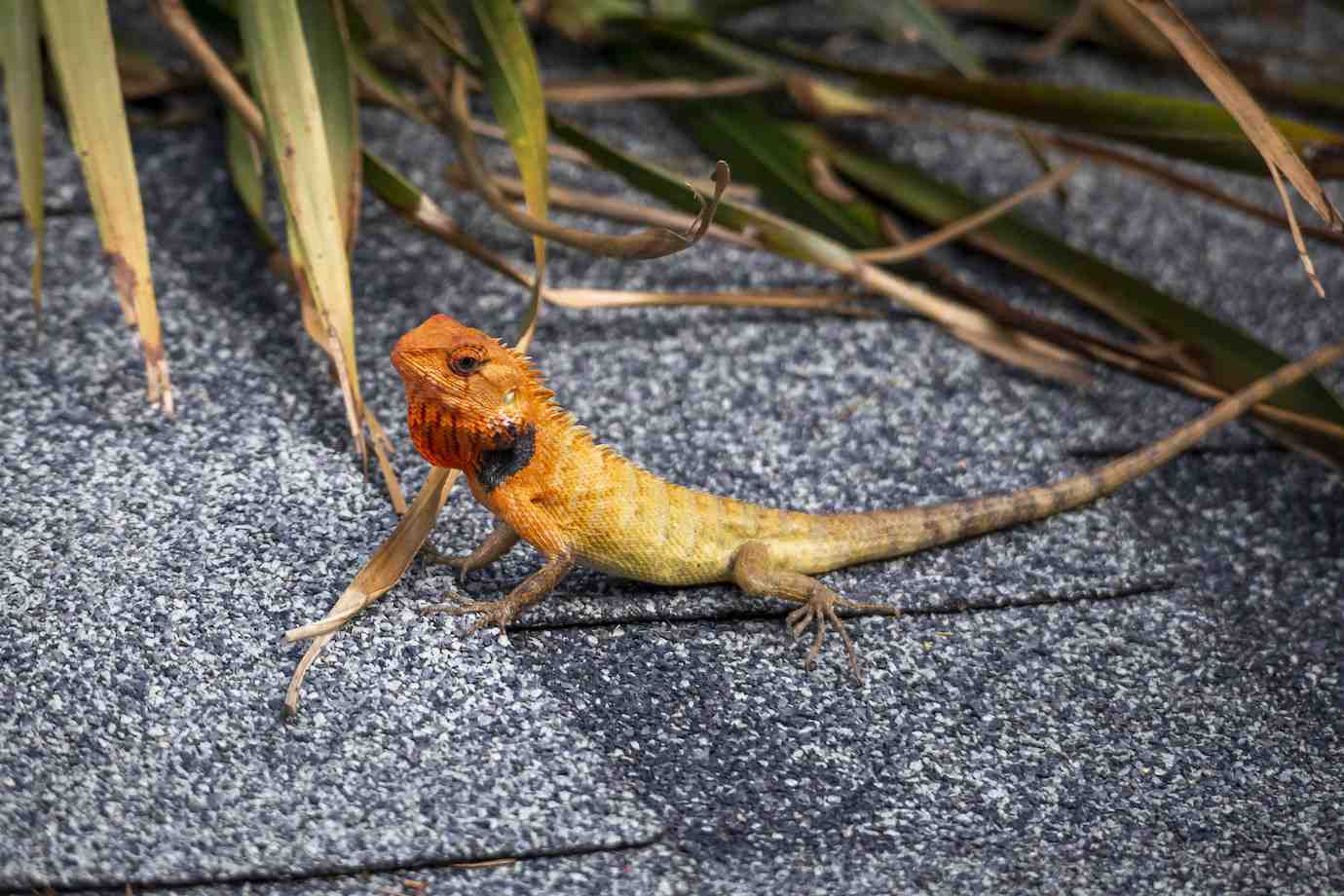
Preventing Parasites in Exotic Reptiles
Parasites are one of the most common — and avoidable — health problems in captive reptiles. While they may not always be visible, parasites can cause weight loss, poor appetite, and even life-threatening illness in your scaly companions.
The good news? With the right knowledge and care routine, reptile parasite prevention is totally possible. This guide will walk you through the basics of keeping your reptile parasite-free, how to spot problems early, and what to do if your pet needs reptile parasite treatment. Whether you’re a beginner or a seasoned keeper, good exotic pet hygiene starts here.
Why Parasites Are a Problem in Reptiles
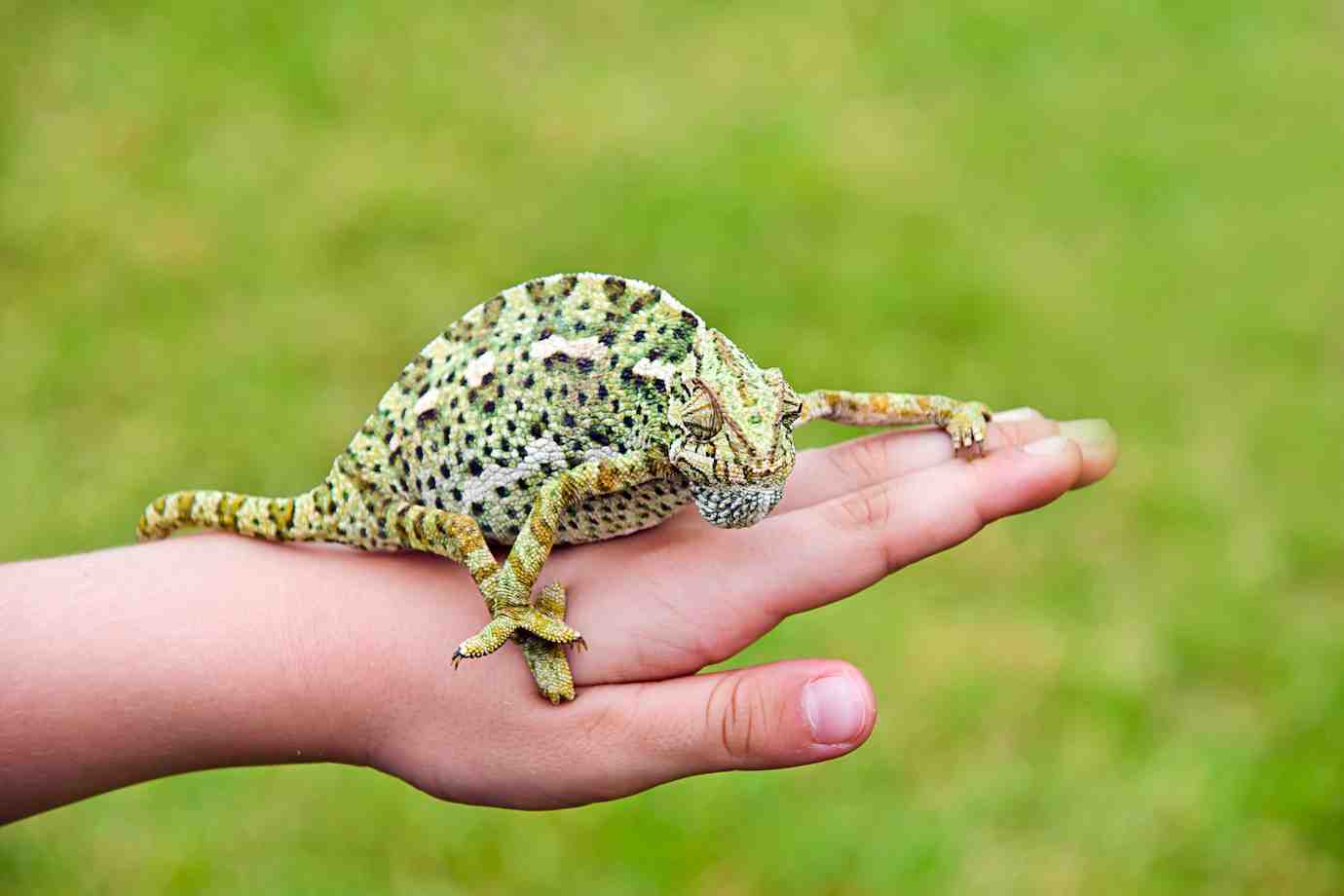
Reptiles can host two main types of parasites:
- External parasites – such as mites and ticks, found on the skin or in the enclosure
- Internal parasites – like worms or protozoa, found in the digestive system or organs
In the wild, reptiles may carry small numbers of parasites without getting sick. But in captivity, where space is limited and stress levels are higher, parasites can spread fast and cause serious damage.
Common Signs of Parasites in Reptiles
Many parasites don’t cause obvious symptoms at first. That’s why regular observation is so important. Here are the early signs that may suggest a parasite problem:
Internal Parasite Symptoms:
- Unexplained weight loss
- Diarrhoea or loose, smelly stools
- Poor appetite or refusal to eat
- Swollen belly
- Lethargy or weakness
External Parasite Symptoms:
- Excessive soaking
- Itching or rubbing against tank surfaces
- Small black or red dots (mites) around eyes, mouth, or vents
- Pale or dull skin
- Restlessness or hiding more than usual
Tip: If your reptile’s behaviour changes suddenly, check for both environmental issues and possible parasites.
How Reptiles Get Parasites in Captivity
Parasites are often introduced through:
- Wild-caught reptiles
- Contaminated feeder insects
- Dirty enclosures or tools
- Contact with infected animals
- Poor quarantine practices
Even well-maintained tanks can become contaminated if precautions aren’t taken. That’s why exotic pet hygiene should be part of your daily routine.
Reptile Parasite Prevention: Simple Steps That Work
Keeping your reptile healthy starts with prevention. Here’s how to stop parasites before they start.
1. Quarantine New Animals
Always isolate new reptiles for at least 30–60 days. Watch for signs of illness or parasites before adding them to shared spaces.
- Use a separate tank and tools
- Monitor weight, stool, and behaviour
- Consider a faecal test at the start and end of quarantine
2. Keep the Enclosure Clean
A clean tank is your first defence against parasite outbreaks.
Daily:
- Remove waste and uneaten food
- Change water
- Wipe down surfaces if needed
Weekly:
- Change substrate (if using paper or disposable liners)
- Spot-clean decor items
Monthly:
- Deep clean the enclosure with reptile-safe disinfectants
- Rinse everything thoroughly and let dry before reassembling
Clean hands, tools, and feeding tongs help stop cross-contamination between tanks.
3. Gut-Load and Inspect Feeder Insects
Feeders can carry parasites too — especially wild-caught ones or those from unreliable sources.
- Buy from reputable insect breeders
- Gut-load insects with nutritious foods 24–48 hours before feeding
- Dust with supplements as needed
- Discard any dead or mouldy feeders
4. Use Clean, Safe Substrate
Loose substrate can harbour parasite eggs if not cleaned properly. Choose safe, manageable options and clean often.
Good choices include:
- Paper towels (for quarantine or babies)
- Reptile carpet (washable)
- Bioactive setups (with clean-up crew and proper balance)
- Organic topsoil + play sand (for desert reptiles)
Avoid reusing substrate between reptiles.
5. Schedule Routine Vet Checks
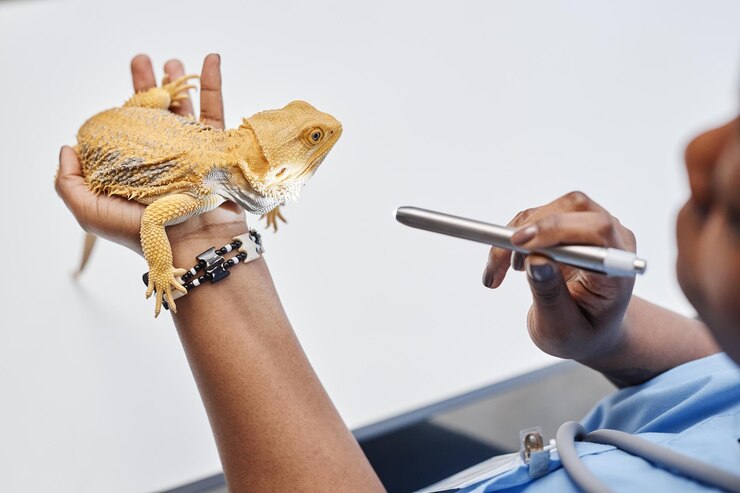
A vet visit isn’t just for emergencies. Yearly check-ups and faecal exams can catch problems early — even before symptoms show.
- Ask for a faecal float or smear test
- Discuss deworming options if your reptile is wild-caught
- Follow any vet-prescribed parasite treatment carefully
What to Do If Your Reptile Has Parasites
Don’t panic. Most parasites can be treated with medication and improved hygiene. The first step? Confirm the problem.
Step 1: Visit a Reptile Vet
Bring a fresh stool sample with you, collected within 24 hours.
Your vet may check for:
- Nematodes (worms)
- Coccidia
- Pinworms
- Flagellates or protozoa
- External mites or ticks
Step 2: Follow Treatment Plans
Your vet may prescribe:
- Oral medications or injections
- Soaking or spraying treatments for mites
- A change in diet or environment
Stick to the schedule — even if symptoms improve early.
Step 3: Deep Clean the Habitat
During and after treatment, clean thoroughly:
- Replace substrate
- Wash all decor and tools
- Disinfect the enclosure
- Limit handling to reduce stress
You may need to repeat treatments if parasites return.
Step 4: Monitor Closely
After treatment, keep a log of:
- Appetite and stool
- Shedding quality
- Energy levels
- Weight
If symptoms return, follow up with your vet.
Common Myths About Reptile Parasites
Let’s clear up some confusion:
Myth 1: Only wild-caught reptiles get parasites
Truth: Captive-bred reptiles can also get parasites from dirty tanks, feeder insects, or other reptiles.
Myth 2: You can treat all parasites at home
Truth: Over-the-counter meds are risky without a proper diagnosis. Always see a reptile vet.
Myth 3: Mites mean poor care
Truth: Even experienced keepers deal with mites sometimes. What matters is how quickly you respond.
Clean Habits, Healthy Reptiles

Reptile parasite prevention starts with clean habits, good sourcing, and regular vet care. While parasites can be scary, they’re manageable with quick action and solid routines.
Make exotic reptile hygiene a daily part of your care, and be ready to seek reptile parasite treatment when needed. By staying informed and alert, you’ll keep your pet healthy — and help set a high standard in the reptile community.

